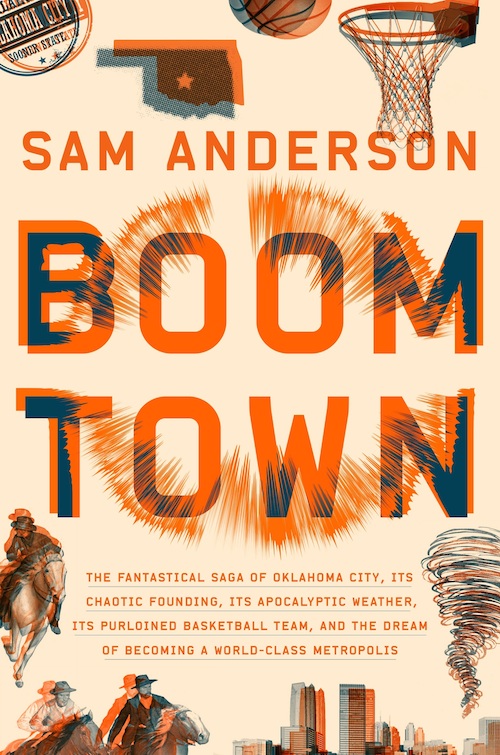
When I fantasize about living in Oklahoma City, I mentally install myself in the Regency Tower, a 24-story downtown apartment building put up in the late 1960s. By comparison to the surrounding built environment — newer, for the most part, than even the city’s mere 131 years would lead one to expect — the Regency ranks as a classic. It has also proven itself as a survivor, standing as it was just a block away from the Alfred P. Murrah Federal Building when the latter was destroyed by the 1995 car-bombing that remains many Americans’ sole association with the Oklahoman capital. The Regency sustained only cosmetic damage, despite a proximity to the blast such that an axle of the explosive-packed Ryder truck crushed a car parked nearby. It was that VIN-stamped part, in fact, that hastened the capture of Timothy McVeigh, the embittered Gulf War veteran who’d masterminded the bombing.
Sam Anderson includes such memorable facts all throughout Boom Town: The Fantastical Saga of Oklahoma City, Its Chaotic Founding, Its Purloined Basketball Team, and the Dream of Becoming a World-class Metropolis. The book was published in 2018, three years after my own first visit to Oklahoma City. I stopped there, as I imagine more than a few do, in the middle of a cross country road-trip. Interstate 40 had already offered up the likes of Barstow, Flagstaff, Albuquerque, and Amarillo, and later would come Memphis, Knoxville, Asheville, Raleigh. Of the time I spent in all these places, somehow my evening, morning, and afternoon in Oklahoma City left the sharpest impression. This owed less to visiting the site of the Alfred P. Murrah Federal Building, now the affecting if somewhat literal Oklahoma City National Memorial, than to the surprisingly robust urban gestalt I sensed while walking around its environs.
“OKC is in the midst of a downtown renaissance,” Anderson writes, “a growth whose improbability — after decades of busts and self-inflicted disappointments and unspeakable tragedies — has made the place almost legendary among contemporary American cities.” On nearly every stop of the road trip I heard locals express surprise at the revitalization of their city center (“I’d never have believed downtown could be like this”), but in Oklahoma City I felt it right there on the streets. That impression could have been enhanced, I admit, by the pumpkin festival, which happened to be going on in the Myriad Botanical Gardens beneath Devon Tower, the brazenly out-of-scale “850-foot glass skyscraper that is the most literal possible monument to the city’s grandiose self-image.” And it certainly didn’t bring me down to have a cappuccino at Elemental Coffee, which in the book’s acknowledgments Anderson calls “my OKC office.”
Read the whole thing at Substack.